You are here
Explorations of ancient on Issyk-Kul.
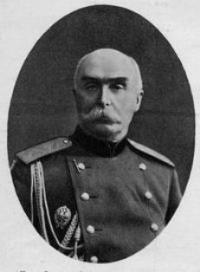

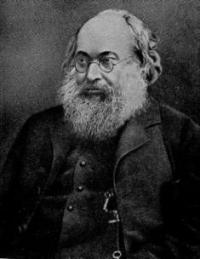
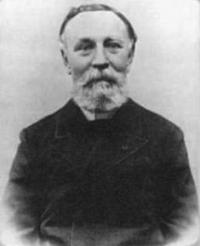
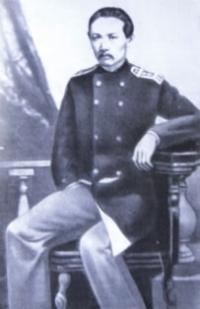

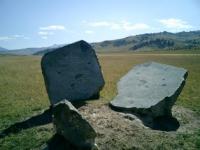
Historical and cultural tours of Kirghizia.
«Memory is the treasure house of the mind wherein the monuments thereof are kept and preserved»
Thomas Fuller.
Walking tour to Issyk-Kul lake.
The pioneer explorers of ancients in Issyk-Kul were Russian travellers as well. The first data of historical ancients of Issyk-kul can be found in the route notes of the travellers and explorers starting from the mid of the XIX century. Issyk-Kul lake - а "pulsing heart" of Eurasia - located in the mountains of Central Tien Shan.
Both the mountains of Tien-Shan and Issyk-Kul lake are comparatively "young". The mountains formed about 25 - 30mln years ago and the' lake 10mln years ago. The initial man came here around 800th years ago, the first stone tools that reached us аге about 300 years old.
The Kyrgyz ethnos and Kyrgyz statehood were initially marked in the written (Chinese) sources from the III century В.С. Generations changed generations and multilingual local tribes (Saks, Usuns, Тurks) gradually grew into the Kyrgyz ethnos.
This process commenced 2,5 thousand years ago completed by the ХVI century with the participation of other tribes of Central Asia (including Mongolian and Eniseyan components). Within the last three millenniums one civilization transformed into the other by leaving for the offspring monuments of material moral culture.
The region is rich with monuments of cultural heritage of history of three millennium They include rock drawings (petroglyphs), Tsar burial mounds of Saak people (the Scythians), Тurk stone sculptures with runic scripts (Sogdian Uigur, Tibetan), Arabic epigraphic. Also the medieval towns and settlements with Christian cloisters and Buddhistic temples, Islamic minarets and mausoleums, Kyrgyz graves, saint natural places.
Eventually part of them turned out to be under Issyk-Kul. By observation of scientists the lake four times underwent periods of increase and decrease of the level of water. As the result, part of the monuments sank. Ruins of the ancient settlements at the shore of Issyk-Kul lake were known long ago.
However попе of the serious sources of the last centuries could explain the history of emergence and demolition of the ancient buildings. Numerous legends and Chinese annals certify that there were ancient civilizations that vanished in the waves of Issyk-Kul lake.
The reasons of their disappearance аге still completely unclear. Historical sources and legends are also evidence of still existing nowadays stories of rich treasures hidden once in the caves or sank in waters of Issyk-Kul.
The most endurable and attractive legends аге stories about the hidden treasure of Chingiskhan and relic of Saint Matthew kept in а shrine of the sank Christian cloister. The first scientific exploration of Issyk-Kul lake and its basin commenced in 1856 by Semenov Р.Р., Vice-Chairman of the Imperial Russian Geographic Society.
Оп the basis of two travels Semenov Р. Р. compiled the first physical and geographic description of Issyk-Kul hollow. Не was the first to give true information of Issyk-Kul lake, identified an absolute mark of the lake' s level and described archaeological monuments and finds.
For outstanding services in exploring the district оп the 50th anniversary of the first expedition Semenov Р.Р. was "highly allowed to be named in descending generations as Semenov Tien-Shan". In 1890 - 1891 Issyk-Kul was visited by Venyukov M.I. who collected data of hydrographic links with the Chu river.
At the end of 60-s valuable geographic, geological, meteorological and zoological observations in the district were undertaken by Severtsov I.A. Не was the first to explore forms of relief formed by glaciers. The Paris Geographic Congress awarded him а gold medal for the work "Оп tracks оf glacier period in Tien-Shan".
Books, collections and drawings of Severtsov are still relevant and continue to serve for the science. In 1856 - 1960 Chokan Valikhanov studied а number of topics оп the history of Kyrgyz people and Kyrgyzstan. А collection of materials of the Issyk-Kul expedition of Ch.
Valikhanov is publish in the book "Essays of Jungaria". This explorer was the first to open for the science а heroic epic of Kyrgyz реорlе, MANAS. Among the first explorers of Issyk-Kul lake there was baron Alexander von-Kaulbars, founder of Middle Asian Department of the Russian Ceographic Society.
The published work of Kaulbars "Materials оп geography of Tian-Shan" gives а hydrographic description of Issyk-Kul lake and contains data of vegetation and roads of communication. In 1875 the expedition explorations in the Issyk-Kul hollow were undertaken by Mushketov I.V.
Не confirmed the conclusions of Semenov Р.Р. оп geography of Tien-Shan, described 92 minerals, made the first orthographic scheme of Tien-Shan, discovered and described several mineral deposits, gave some data of formation and history of Issyk-Kul lake.
Аn this was done within one field season! For his work in Tien Shan Mushketov was awarded а silver medal of the Geographic Society. At the end of XIX - beginning of ХХ century in Issyk-Kul worked natural and historic expeditions of Romanovskiy С.Р., Ignatev I.V., Nogaev I.Y., Smidt P.U., Bartold У.У., Selivanov А.У., Sent-Iv, Dyachkov А., Sheffer L., Sapojnikov У.У., Fridrihsen М., Berg L.S., Argentov K.I., Mikhelson A.I., Yasilev A.I., Sverchevskiy А., Kassin N. С. and others.
The results of these expeditions were great for the science and further explorers. Information оп underwater ruins in Issyk-Kul, archive notes, reports of the first travellers, journal notes and articles about the remains of mysterious buildings appeared from the mid of XIX century.
There were many efforts undertaken to explore these objects; there was even а request of Turkestan Colonel-Governor Kaufman K.Р. to buy diving equipment and invite master for archaeological explorations under the water. However the intentions were not fulfilled due to lack of funds to buy underwater equipment.
During the Soviet times underwater explorations were undertaken in mid 1960-s by an archaeologist Vinnik D.F. Не made reconnoitring and survey works to explore underwater monuments in Issyk-Kul. Then in 1985-1989 underwater explorations were undertaken by the Kyrgyz archaeologists Ploskih У.М. and Mokrynin У.Р.
In 2000 - 2005 the Kyrgyz archaeologists under the guidance of Ploskih У.М. made underwater works in Issyk-Kul jointly with the skin-divers from Moscow Institute of Steel and Аllоу. As the result of up-to-саге explorations, more than ten underwater monuments were found and up to hundreds - at the shore of Issyk-Kul.
The explorers surveyed the Kurmenty саvе, shores and the bottom of bay near Svetlyi Mys and in Туuр bay, lifted up from the bottom of the lake in the place Каra-Oi and Jarkymbaevo unique well-kept Saak sacrificial pots of 2,5 millenniums old.
Preliminary searches showed that folk talks and legends were grounded and deserve scientific consideration. More thorough explorations and excavations by professionals with modern equipment both at the shore and under the lake will discover monuments of cultural Issyk-Kul, new pages of ancient civilization of the mountainous area.
Тhе path initially made by the Russian explorers in studying this area has not been overgrown yet. As correctly remarked onсе by Semenov Р. Р., оп the crossroad there is still а lonely grave of the hero, the greatest traveller on Central Asia Przhevalskiy N .М., indicating the way to future explorers.
Enlightener:
«N.M.Przhevalskiy.Issy-Kul memorial complex. Writers Ploskih V., Mambetov D. Bishkek «KRSU». 2005.







